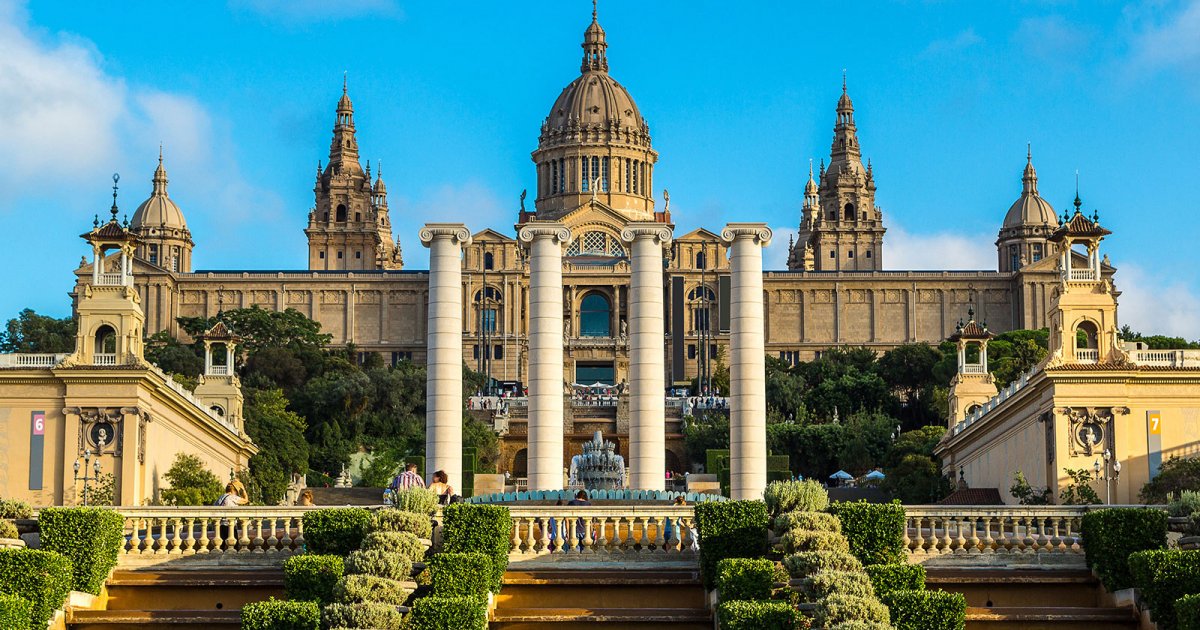MONTJUÏC, Mnac - First Part
 Language: English / USA
Language: English / USA
The Museu Nacional d'Art de Catalunya, better known as MNAC, is the largest and most important Museum in Barcelona, and is entirely dedicated to Catalan art.
Few art collections in the world offer such richness and variety: it is a veritable treasure trove. The Museum towers over the city from its location in Palau Nacional, the huge, domed, 50,000 square meter building that was built at the foot of Montjuïc Hill in 1929 to host the main part of the Universal Exposition; a few years later it was transformed into a permanent museum. Sixty years later, the Museum was renovated with an impressive, two-phase intervention (Romanesque and Gothic art). On this occasion the halls' exteriors were even exploited, where medieval chapels and churches were rebuilt and now unexpectedly "stick out" in the Museum, almost as if they were contemporary art installations.
The National Art Museum of Catalonia is known above all for its vast section of Romanesque art that takes you through an incredible 21 rooms on the left side of the ground floor. Fresco cycles prevail, which in some cases are almost a thousand years old and of impressive sizes, and were transported here from the north of the region at the edge of the Pyrenees; but there is no shortage of panel paintings and sculptures in stone and wood, as well as architectural details that make your visit unforgettable.
You'll be amazed while admiring the beautiful frescoes from the town of Taüll, which have been removed from the Church of Saint Climent and Santa Maria. The dominant theme is the austere figure of Christ the Judge, surrounded by the symbols of the four evangelists (the angel, lion, bull, and eagle), and groups of saints or angels. Another highlight are the frescoes in Hall 14 originating from the Church of Sant Vinçent in Cardona, until the grand finale in Hall 21 with a reconstruction of a vast room of the monastery of Santa Maria de Sixena in Aragon.
FUN FACT: a colossal reconnaissance operation commenced in 1919 to remove Romanesque frescoes in the Pyrenees and put them back together; the task was completed in just four years, record time. This was necessary in order to beat certain unscrupulous organizations that were removing the frescoes to sell them abroad, especially to American museums.



